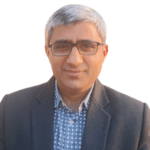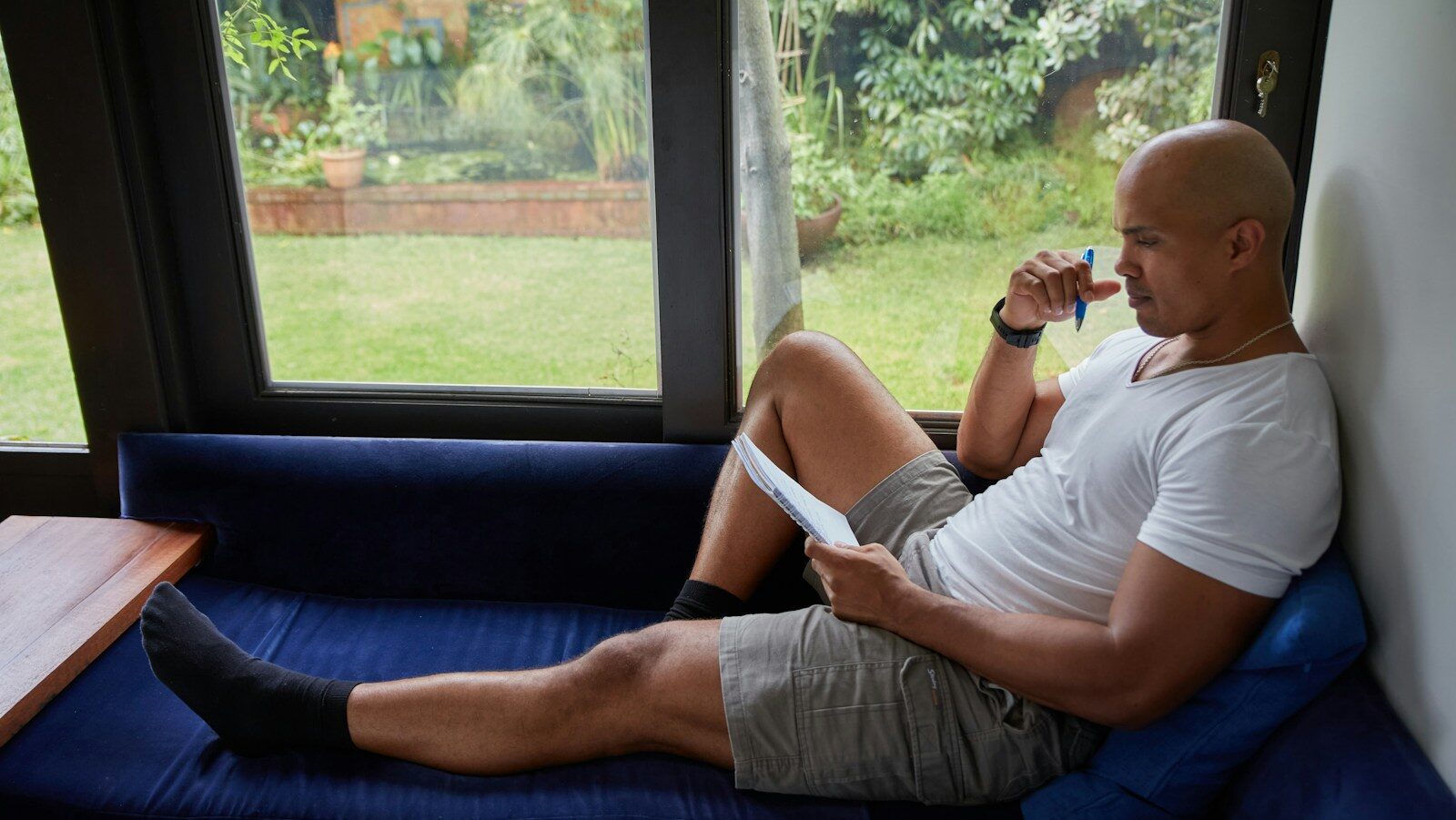Navigating the future ecosystem of care: Coaches as catalysts for holistic well-being
Coaching already helps clients achieve overall growth by uncovering the different needs that lead to personal well-being. In the future, coaches can lead the transition to a connected ecosystem of care by empowering holistic growth, supporting caregivers, and bridging siloed care systems.
Challenge:
Existing caregiving systems lack cohesion, hindering support for physical and mental health, recreation, social well-being, and spiritual growth
Opportunity:
Coaching can help clients identify links between physical, mental, social, and spiritual elements of well-being in the context of daily life
Impact:
Coaches can serve as bridges in a new ecosystem of care by empowering clients and caregivers to promote holistic growth
Wisdom Weavers
Transformation in health and well-being signals a growing need for connected systems
The global surge in well-being is changing how we travel, work, use technology, and care for our health. The wellness industry has seen 12% annual growth since 2020 and is expected to grow an additional 52% by 2027. At the same time, access to well-being services is increasing with low-cost wearable health technology and mobile apps that help users track habits related to sleep, diet, stress, activity, and water intake. Coaches are already engaging with workplace well-being programs and tailored health and wellness coaching services. However, they have the potential to do even more by leading a transformation towards holistic well-being. This means considering the whole person and their physical, emotional, social, and spiritual self. Coaches can collaborate directly with clients and other health and wellness leaders to lead a movement of connected care that supports holistic well-being.
The concept of holistic well-being, deeply rooted in various cultural perspectives, underscores the importance of considering the whole person—physically, emotionally, socially, and spiritually. As a healthcare leader in Saudi Arabia, Wisdom Weaver Haitham Elmasry points out that “in the Islamic tradition, the prophet Muhammad talked about three components of a better life: safety, good physical health, and proper nutrition.” Meanwhile, “Western medicine comes from the Greeks, who believed doctors treated the whole human being, including their physical, mental, and emotional health.” The wellness industry often caters to individualized well-being, where self-care products and services address physical and emotional needs. However, research in the ‘Blue Zones’ illustrates an alternative approach to well-being; the world’s healthiest communities are the ones that prioritize daily movement, healthy food choices, a sense of community, and meaning and purpose. When a community fosters healthy choices, relationships, and purpose, it achieves holistic well-being for all.
Overcoming disconnection to achieve holistic well-being
Haitham connects ongoing research in healthy communities to the growing body of evidence around social determinants of health. Social determinants are factors in our environment that contribute to community and individual well-being, such as access to nutritious food, quality education, clean air and water, and stable housing. As Haitham explains, “Being well is a personal decision; it is also a community responsibility. Building the right to well-being means enabling the community to make well-being a commitment for everyone.” While coaches are already working to empower individual well-being, Haitham sees coaches taking on new roles to support well-being at the community level.
To create an environment that fosters collective well-being, different sectors would need to collaborate to promote a society that meets the diverse needs of individuals. This includes their physical, emotional, social, and spiritual needs. Unfortunately, the caregiving systems that serve these needs are not well-connected, and there is a lack of awareness about how these aspects of well-being are related. Overcoming these challenges means strengthening individual awareness around holistic well-being and supporting community organizations, healthcare workers, educators, and other caregivers to collaborate in an interdependent system. Coaches can play a pivotal role in supporting individual well-being and bridging and equipping caregivers to work together effectively in a future ‘ecosystem of care.’
Coaches can work at three levels in the evolving ‘ecosystem of care:’
- Giving care as caregivers
- Supporting caregiver capacity in the ecosystem
- Bridging players in the caregiving ecosystem
Reimagining the ‘ecosystem of care’
The ‘caregiving ecosystem’ or ‘ecosystem of care’ is an emerging health model that addresses the complex care needs of individuals by supporting collaboration between patients, their family caregivers, the overarching medical team, and care navigators. In a study that applied the care ecosystem in dementia care, the model improved patient outcomes for those with dementia and also reduced depression and caregiver burden for family caregivers. This model has also been applied in a public health context to connect siloed health and social services to address the root causes of poor health in communities. In the future, this model could be expanded to treat the root causes of poor health while also cultivating systems of flourishing that support holistic well-being.
How can the ‘ecosystem of care’ bridge caregivers and receivers to support collective well-being?
Coaches as caregivers: Strengthening awareness and skills needed for holistic well-being
Coaching relationships are already rooted in care, but well-being is not always central to coaching agreements. Looking to the future of coaching practice, Wisdom Weaver Christian van Nieuwerburgh hopes coaches “embrace that idea that the coach should always have the well-being of the client and their stakeholders in mind and give it equal weighting to the achievement of certain performance-related outcomes.” This means rejecting the idea that well-being can be compromised for success or that well-being is a bonus. Instead, coaches who adopt an identity as caregivers in the ‘ecosystem of care’ commit to empowering client growth through well-being.
This shift is already underway. In the wake of the pandemic, organizations are investing in solutions that address the impact of poor health on workplace performance. As a result, workplace wellness programs often employ coaches to support skills building and awareness around stress management, self-care, and digital well-being. Major coaching platforms like BetterUp, CoachHub, and Ezra all offer tailored wellness services and are leading research to understand how coaching can support holistic client well-being. The demand for health and wellness coaches is also growing outside of professional development. In 2022, the US health coach market was valued at USD 3.64 billion and is estimated to grow by 6.70% annually from 2023 to 2032.
As coaches take on a caregiver identity, they can help clients:
- Build greater awareness around their own well-being,
- Identify needs or imbalances in their personal development,
- Set goals around holistic growth,
- Understand the need for both caregiving and care-receiving,
- Learn how to communicate needs to others, and
- Develop coaching skills that facilitate connection
Speaking from his experience as well-being advocate, researcher, and coach, Wisdom Weaver Badri Bajaj challenges coaches to consider how they might infuse well-being in all of their client interactions. He recommends setting time at the beginning of a session to practice breathing or other exercises that prioritize the well-being of the client and the coach, before digging into conversation. Badri also notes that many high-achieving clients lack the emotional intelligence to identify the signals that their lives may be out of balance. By working to develop a client’s emotional intelligence, including the ability to listen to self and to others, he believes that coaches can create ripples of change in a disconnected society.
“Coaches have a role to play in the ecosystem, but we can also teach coaching skills. If people can listen and show curiosity, they will find greater happiness, connection, and well-being.”

New caregiving roles for coaches
Christian and Haitham foresee new opportunities for coaches in healthcare. Christian’s work at RCSI University of Medicine and Health Sciences, focuses on the role of coaching in enhancing health and well-being, exemplified by the new master’s program in Positive Health Coaching. Positive Health Coaching, he explains, builds off research in neuroscience and positive psychology to help clients make the lifestyle changes that support long-term health and wellness. Haitham believes that in the future coaches can fill a gap in the health system to support individuals with chronic health conditions by supporting adherence to new treatment plans or medications.
Supporting caregivers in the future ‘ecosystem of care’
Creating a resilient ecosystem of care means equipping caregivers with tools to nurture their well-being and connect to other support systems. Citing an emerging application of coaching support, Christian points to coaches who worked with medical professionals during the pandemic to strengthen caregiver resilience. Coaches can take on similar roles in the future ‘ecosystem of care’ to strengthen other community supports including religious organizations, charities, social services, educators, and even parents.
Several coaching strategies can boost caregiver resilience. When researching undergraduate students’ well-being in India, Badri found that students with greater mindfulness also showed higher resilience, leading to improved well-being. Badri’s research indicates that coaching for mindfulness may also improve caregiver resilience. Coaches have also been known to adopt behavioral health strategies like motivational interviewing to support those caring for family members with complex needs. In a holistic health context, Haitham sees coaches as an integral part of the healthcare team, supporting partnership and accountability between caregivers and patients.
Resourcing, another coaching strategy, can be reimagined in the future ecosystem of care to equip caregivers with coaching skills that foster networks of mutual caregiving. In the absence of a coach, training caregivers to use coaching skills can support new opportunities for peer coaching and mentorship among caregivers. Christian suggests that coaches will also need support as they take on the caregiver identity. Beyond peer-coaching communities, he proposes that professional bodies create support systems aligning with coaching specializations, “Positive Health Coaching, or health coaching as a sub-discipline, will grow. It would be great for professional associations to provide a home for those people who consider themselves health and well-being coaches so that this group of coaches can talk to one another, learn from one another, and provide moral and practical support to each other.”
Building bridges in the ecosystem of care
At a broader level of the caregiving ecosystem, coaches can serve as connectors. In current coaching practice, coaches act as connectors through referral. Christian expands on the idea of referral, indicating that in the future coaches can form connections with other leaders in well-being, “One of the roles of coaching is to connect people to existing resources — like charitable organizations, health organizations, societal organizations, and religious organizations that are interested in well-being. Coaching can be a first point of contact for someone saying, ‘Look, I just want to talk about my well-being.’ And then there is a clear referral system, if necessary, to access the kind of support available within their community.” As coaching continues to evolve and engage with new and expanding audiences, professional bodies may also need to revise guidelines for referral.
Coaches can also serve as connectors in the care ecosystem by bridging siloed caregiving systems. Leaders and organizations responsible for promoting physical and emotional health, spiritual growth, a sense of belonging, and purpose remain disconnected from each other. Building off team coaching competencies, coaches can bridge these diverse players by helping community leaders take on a team identity that values each member’s diverse expertise and roles. Through this process, coaches can also raise awareness around holistic well-being, foster a shared mission in the caregiving ecosystem, and support interprofessional collaboration. As an additional stakeholder in community health, Christian hopes that coaching research can answer the question, “How do coaches involve the community in individual and community well-being?”
A Call to Action for Coaches
The ‘ecosystem of care’ model opens pathways for dynamic collaboration between disciplines, caregiving systems, and the community, ushering in a new vision for the future of coaching and well-being.
While coaches are already working to empower individual well-being, coaches can actively transform caregiving systems to enable well-being for all. As part of this transformation, coaches can take on the identity of coaches as caregivers, facilitating client growth through holistic well-being. Coaches can also think deeply about the potential for coaching to transform care approaches.
Transformational questions:
- How can the ‘ecosystem of care’ bridge caregivers and receivers to support collective well-being?
- In what ways does the transformation of “coach as caregiver” impact coaching relationships?
- What would it look like if every care team and community organization had a coach?
- What new/other roles could emerge for coaches to support collective well-being?
- How could existing coaching practices like referral, resourcing, and multi-stakeholder contracting evolve in the ‘ecosystem of care?’
- In a future ‘ecosystem of care’ landscape, what are some potential defining characteristics and features of coaching?
Resources to dig deeper:
- Explore coaching well-being tools like the Wheel of Life, Path to Desired State, and the VIA Character Strengths
- Read books from coaching researchers on Coaching for Well-being and emerging practice in Positive Health
- Follow ongoing research in well-being through the Global Flourishing Study and the Global Wellness Institute
- Learn from the Camden Coalition on establishing an ecosystem of care






